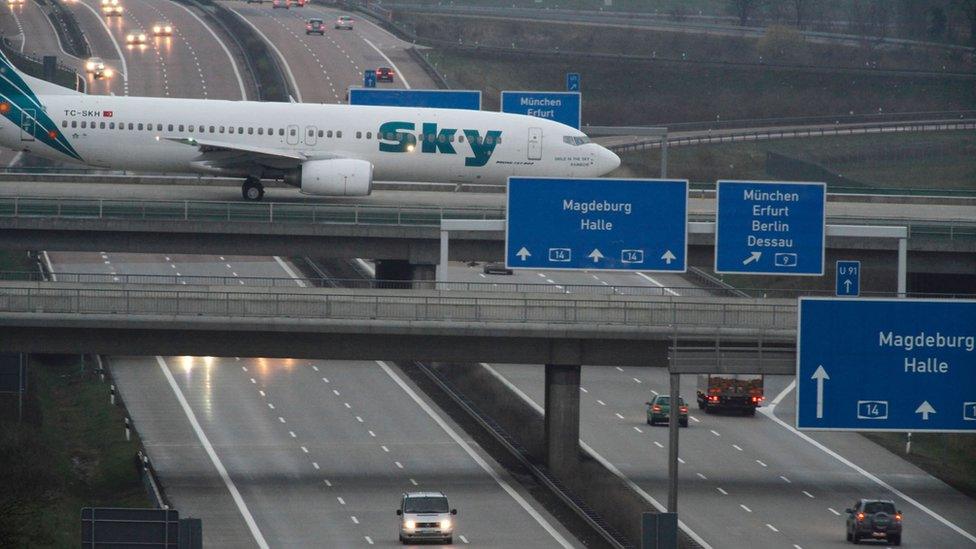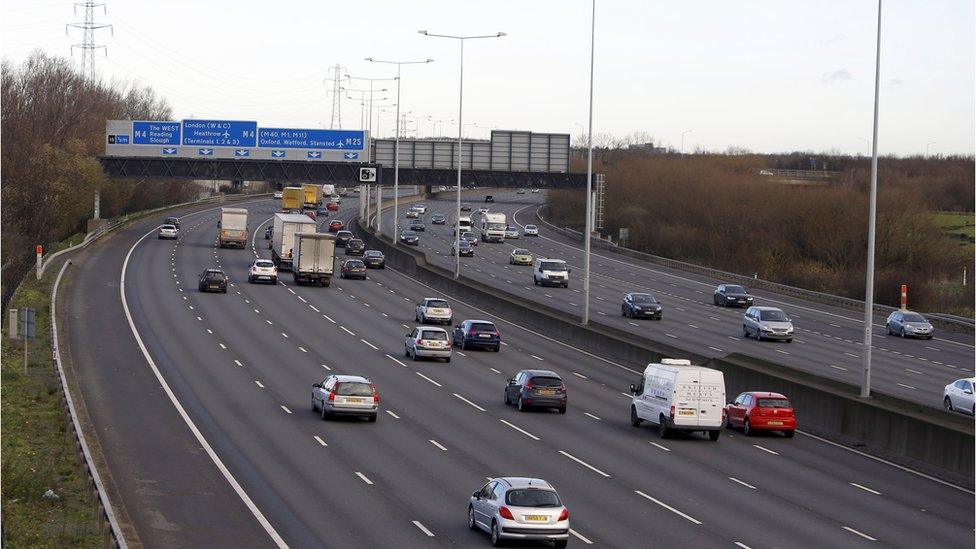How do you build a runway over a motorway?
- Published

A motorway bridge at Leipzig-Halle airport has been carrying planes, like this one shown taxiing, for years
Heathrow's third runway could involve planes taking off from a "ramp" over a motorway. How would this work, asks Harry Low.
There's an obstacle in the way of the proposed runway - the M25. An initial idea of constructing a road tunnel beneath the runway has been put aside. Building a "ramp" instead would be "a cheaper and quicker way of doing it", said Transport Secretary Chris Grayling.
Heathrow is situated near the the M25's busiest section, between junctions 14 and 15. Nearly 100 million vehicles flow through this stretch each year, according to Department for Transport figures, external.
Some on Twitter have joked, external that this ramp might resemble the front of some aircraft carriers that have a steep incline, known as a ski jump. "I can assure you it's nothing like that," says Chris Chalk, who's on the transport expert panel for the Institution of Civil Engineers.
"In fact, you wouldn't actually be able to see it with your eye. If you were on an aircraft you wouldn't know about it."
The gradient would be less than 1%, as required by the European Aviation Safety Agency. What impact would this have on a plane? "It doesn't affect the performance of an aircraft or provide any problems whatsoever," says Chalk.
"When an aircraft comes in to land, it's coming in at a gradient of about 5% so less than 1% is a very small difference. In fact, it's quite normal to have a runway with some gradient on."
Other UK airports that would have a greater gradient than that proposed at Heathrow include Bristol, Manchester and Birmingham.

More than 250,000 cars use this stretch of the M25 each day
Runway bridges have been built over busy roads including at Charles de Gaulle in Paris and Fort Lauderdale in the US state of Florida. Planes taxi along a bridge over a motorway at Leipzig-Halle airport in Germany and at Amsterdam's Schiphol Airport.
Designers are required to allow a large amount of space either side of the runway in case there is an incident on the airfield. Strategically placed slats and the right lighting will be factors in preventing drivers from losing concentration due to planes overhead, explains Chalk, who works for the civil engineering firm Mott MacDonald.
"You tend to have a number of visual buffers because you don't want to distract the drivers. At that distance you won't actually be seeing the aircraft that easily. It hasn't created any issues elsewhere at other busy airports."
So those thinking the boredom of being stuck in traffic on Britain's busiest motorway might be relieved by the sight of a large aeroplane crossing the road will be disappointed.
Join the conversation - find us on Facebook, external, Instagram, external, Snapchat , externaland Twitter, external.